Every week The Slovak Spectator brings you a selection of three short stories from across Slovakia from which pessimism and negativity are absent.
An unusual gift for Petržalka
The Umenie v Petržalke (Art in Petržalka) community has successfully finished a second project aimed at restoring original artworks that were painted on blocks of flats in the largest borough of Bratislava after they were constructed, beginning in the 1970s.
The borough is known for its high number of prefabricated blocks of flats, known as paneláky in Slovak, most of which were built during the communist era.
Following the 2015 reconstruction of a painting entitled Mier (Peace), Umenie v Petržalke has now restored the second of eight monumental paintings. Painted by Ján Ilavský in 1983 on a block of flats on Námestie Hraničiarov, Mierová Pieseň (The Peace Song) was hidden under thermal insulation that was added to the building back in 2005.
“It was a unique phenomenon that cannot be found just anywhere in the world,” the community representatives wrote on Facebook when explaining why they decided to restore these paintings. “These works are part of Petržalka and art in the public space.”
The representatives of Umenie v Petržalke disclosed that by completing the work, they fulfilled their April promise that it would be a gift to Petržalka and its inhabitants to mark the 50th anniversary of the launch of the original construction of the modern borough.
The work took 10 days. The restoration became a reality thanks to grants received from the Petržalka borough and the Bratislava Self-Governing Region, public donations sent to a transparent account, and a financial gift from sponsors.
The Mierová Pieseň artwork has already been presented to the first tourists. As part of the Post-Communist Tour, organised by alternative tour company Authentic Slovakia, which drives tourists across the capital in old Škoda cars, it was shown to visitors from Manhattan, USA.
Westminster Abbey applauds Tatras tribute
This year’s edition of the Tatra Ice Cathedral, which opened at the Hrebienok resort in the High Tatras on November 17, has already attracted attention abroad.
This long-running annual attraction depicts a different piece of world architecture every year. This year, visitors can admire an intricate ice sculpture of London's Westminster Abbey. The abbey itself has promoted the Hrebienok sculpture on its social media.
“We’re very excited to have been chosen as the inspiration for this year’s High Tatras – The Tatra Temple of Ice,” reads the Facebook post.
Visitors to Hrebienok can admire the ice cathedral, comprising a total of 225 tons of ice in 1,800 blocks, as well as miniature replicas of coronation objects connected directly to Westminster Abbey, ice thrones and several works by glassblower and designer Achilleas Sdoukos.
The Tatra Ice Cathedral is open daily from 9:00 to 16:15 until April 2024, and entrance is free.
Slovak success in the world of fitness and bodybuilding
Slovak representatives achieved an impressive tally of medals at the IFBB World Fitness and Bodybuilding Championship 2023, held in Santa Susanna, Spain, on October 31-November 6. The team won a total of 37 medals, including three overall wins.
Over 1,600 athletes from 105 countries gathered in Spain to take part in the largest international event in the history of this sport.
Anna Miklová recorded two overall wins, in the Women’s Acrobatic Fitness and Junior Women’s Acrobatic Fitness categories, and Aneta Tichá recorded an overall win in the Junior Women’s Bikini category, the TASR newswire reported.
The Slovak Association of Fitness, Bodybuilding and Powerlifting also reported that the Slovak representation won the Cup of Nations in two categories: women and junior women.
The main coaches of the 41-member Slovak team were Peter Kokoška (men and juniors) and Juliána Zaukolecová (women and juniors).
Read more good news stories published by The Slovak Spectator:
“It took several years of coordinated campaigns aimed at tracking the asteroid in as much detail as possible, and luckily we ruled out collision with Earth,” says Slovak scientist Eva Lilly, who works on planetary defence.
Instead of becoming a dentist, a young Ukrainian became a journalist and now prepares news for refugees in Slovakia, debunks war-related disinformation and raises money for the Ukrainian army.
Serbian native Katarina Živanović started anew in Slovakia in her late 40s. She discovered not only a new culture, language and customs, but also a different version of herself.
The northern-Slovak town of Žilina has become the first big municipality in Slovakia to ban sales of live carp.
A castle situated in a small village in southern Slovakia reportedly attracts New Zealanders.
A recent archaeological survey at the Zvolen Castle in central Slovakia surprised the archaeologists.
The communists banned popular climber Štefan Zamkovský from the Tatras. But he did not disappear completely.
Political meme for this week
The initial plans of Prime Minister Robert Fico (Smer) to conduct friendly relations with the media, presented in early October, shortly after the September 30 general election, fizzled rather quickly. On November 13, he published a video in which he labelled four media – the Sme and Denník N dailies, news website Aktuality.sk and private TV broadcaster Markíza – "hostile", and said he wanted to check their credentials. He even said they could become “unwelcome guests” at the Government Office. His comments prompted criticism from the president, opposition, and international observers.
A week later, journalists from the four outlets were not physically barred from entering the building. But in an email sent to their newsrooms, Fico announced he would not communicate with the four media unless they "start providing true, comprehensive and timely information to the public".
You can send me your tips on good news stories about Slovakia or funny memes at: radka.minarechova@spectator.sk. Thank you!


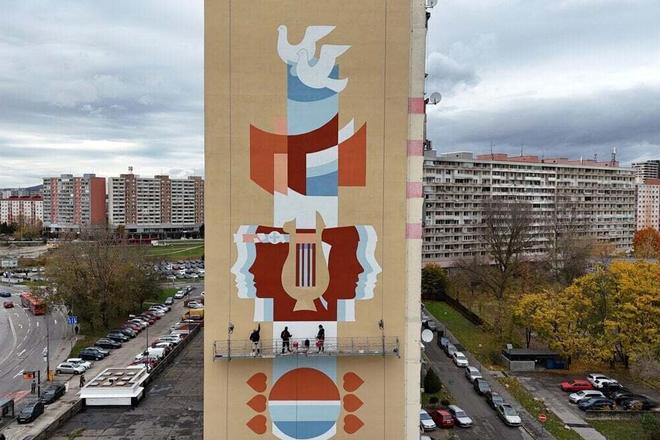 Mierová Pieseň (The Peace Song) by Ján Ilavský (source: Ivana Vrabľová, Petržalka borough)
Mierová Pieseň (The Peace Song) by Ján Ilavský (source: Ivana Vrabľová, Petržalka borough)
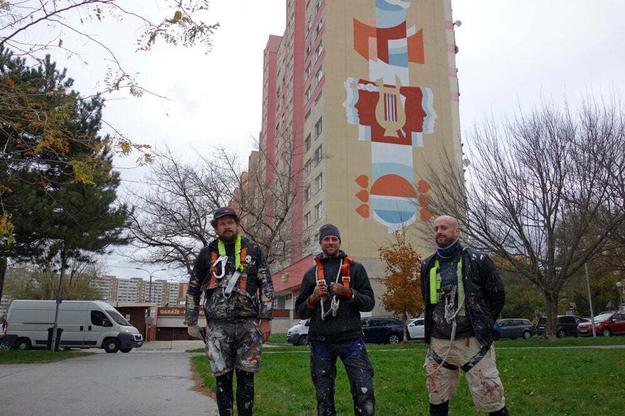 This unique artwork has been restored to the facade of a block of flats on Námestie Hraničiarov in Petržalka. (source: Martin Kleibl)
This unique artwork has been restored to the facade of a block of flats on Námestie Hraničiarov in Petržalka. (source: Martin Kleibl)
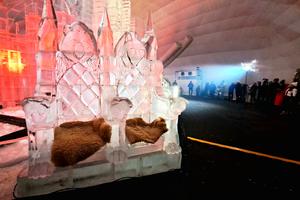
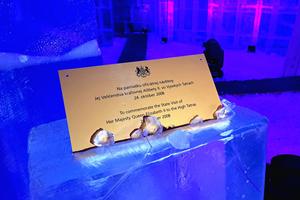
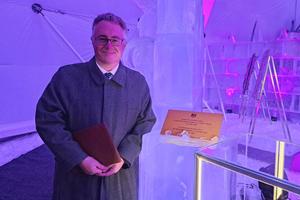
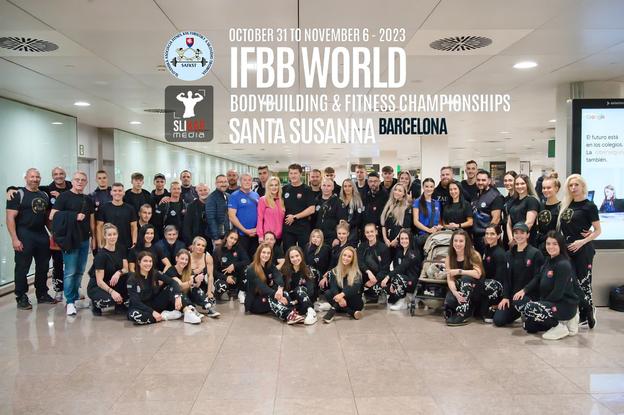 The Slovak representation at the the IFBB World Fitness and Bodybuilding Championship 2023. (source: Facebook/Slovenská asociácia fitnes, kulturistiky a silového trojboja)
The Slovak representation at the the IFBB World Fitness and Bodybuilding Championship 2023. (source: Facebook/Slovenská asociácia fitnes, kulturistiky a silového trojboja)
 Anna Miklová (source: EASTLABS)
Anna Miklová (source: EASTLABS)
 Translation: We could let Sme, Denník N or Aktuality enter the Government Office, but only if they wrote about us positively. // But why would we want to have at our press conferences media that are deliberately lying? (source: Cynická obluda)
Translation: We could let Sme, Denník N or Aktuality enter the Government Office, but only if they wrote about us positively. // But why would we want to have at our press conferences media that are deliberately lying? (source: Cynická obluda)